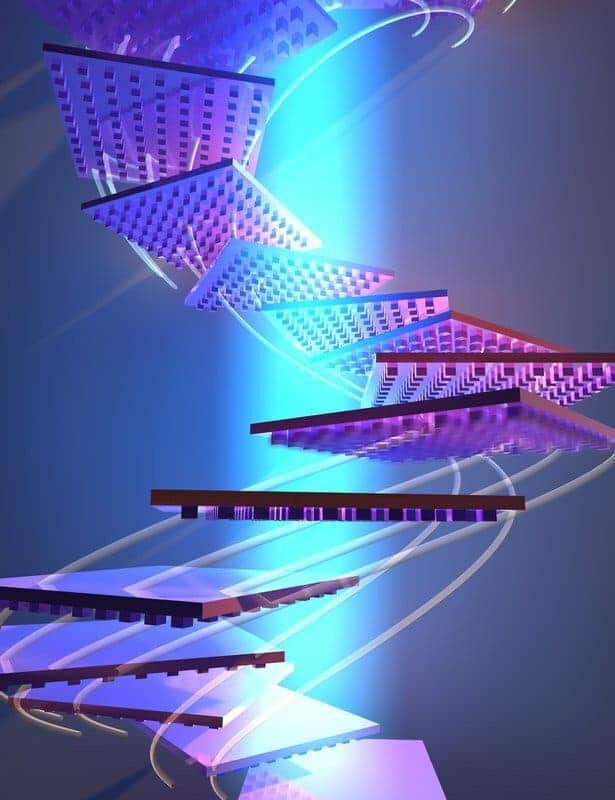
In the future, spacecraft could travel to other stars faster than anything currently available by using laser light sources that are millions of miles away. For the moment, this prospect has been explored only theoretically by physicists at Caltech. In their new study, the researchers propose levitating and propelling objects using a beam of light by etching the surface of those objects with specific nanoscale patterns.
A pattern that keeps objects afloat
For decades, researchers have been using so-called optical tweezers to move and manipulate microscopic objects (i.e. nanoparticles) using a focused laser beam. Nanoparticles can be suspended mid-air due to the light scattering and gradient forces resulting from the interaction of the particle with the light. Such devices have been used to trap small metal particles, but also viruses, bacteria, living cells, and even strands of DNA. For his contributions to developing optical tweezers, Arthur Ashkin was awarded the 2018 Nobel Prize in Physics.
However, optical tweezers are limited by distance and the size of the objects. Essentially, only very small objects can be manipulated with light in this fashion and only from close range.
“One can levitate a ping pong ball using a steady stream of air from a hair dryer. But it wouldn’t work if the ping pong ball were too big, or if it were too far away from the hair dryer, and so on,” Ognjen Ilic, a postdoc at Caltech and the study’s first author, said in a statement.
In their new study, Ilic and colleagues have proposed a radical new way to use light in order to trap or even propel objects. Theoretically, their method is not limited by an object’s size or distance from the source, which means macroscopic objects such a spacecraft could be accelerated, perhaps even close to relativistic speeds, using the force of light alone.
For this to work, certain nanoscale patterns need to be etched on an object’s surface. When the concentrated laser beam hits this patterned surface, the object should begin to “self-stabilize” by generating torque to keep it in the light beam. The authors say that the patterning is designed in such a way as to encode the object’s stability.
This would work for any kind of object, from a grain of rice to a spaceship in size. The light source could also be millions of miles away which would make this technology ideal to power a light sail for space exploration.
“We have come up with a method that could levitate macroscopic objects,” said Harry Atwater, Professor of Applied Physics and Materials Science in Caltech’s Division of Engineering and Applied Science. “There is an audaciously interesting application to use this technique as a means for propulsion of a new generation of spacecraft. We’re a long way from actually doing that, but we are in the process of testing out the principles.”






